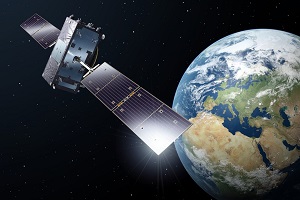By 2020, there will be around 10 billion IoT connected devices, a figure forecast to rise to 22 billion by 2025. Many of us already benefit from these devices in our everyday lives, says Manish Choudhary, senior vice president, Global SMB Products & Strategy and chairman India, Pitney Bowes Inc.: smart thermostats we manage remotely, lighting, security cameras, smart utility meters – even smart fridges.
We use these devices without thinking about the technology behind them. As Bill Gates said, “The advance of technology is based on making it fit in so that you don’t really even notice it, so it’s part of everyday life”.
IoT has transformed the enterprise, too. Estimated to add $14.2 trillion (€12.6 trillion) to the global economy by 2020, it accelerates speed, boosts productivity and improves safety. Productivity gains, the ability to increase scale and scope, and improving efficiency are important drivers for Enterprise IoT adoption, also referred to as IIoT (Industrial Internet of Things). In ‘Taking the pulse of Enterprise IoT’, a McKinsey study, the most common drivers for adopting IoT was optimisation of, and visibility into, operations.
There is another way it has the power to revolutionise the enterprise. IoT provides an unprecedented opportunity to transform the customer experience. For consumers, it is already revolutionising the relationship between brand and customer. Businesses are finding exciting new ways to deliver an outstanding customer experience across industries including retail, healthcare, utilities and financial services. In the enterprise, it has huge potential to improve two-way interactions between vendor and client, to build a long-term, profitable dynamic which drives growth.
In enterprise sales, many organisations offer similar products and services. They differentiate by delivering a memorable service experience. This is where IoT really unleashes its potential. IoT vendors can deliver an unrivalled, connected, personalised client experience which will transform organisations. But for this to be a success, IoT vendors must build a customer-centric culture that evangelises data and stimulates innovation.
To do this, they must focus on four key areas:
Secure the data but make it accessible to teams that will use it to innovate
Sensors collect huge amounts of data from a diverse range of connected equipment, from industrial manufacturing technologies to automobiles, aeroplanes and, in our case, shipping and mailing technologies. Organisations need to store this data securely in a central repository – a data lake – rather than holding the data in silos around the organisation.
At Pitney Bowes, we have 300,000 IoT-connected devices, generating 2 billion events a year, 5 million each day. We store the data gleaned from these connected devices securely in a data lake, which relevant teams have access to. These teams extract insight from the data and collaborate to find areas to improve the customer experience. They use it to fuel decision-making and influence the product roadmap.
Use the data generated to improve understanding of the client and reimagine engagement

Businesses can use data generated by IoT-connected devices to perform analytics, to extract insight, understand behaviours, trends and patterns. It provides the foundation for algorithms enabling accurate forecasting, for predicting outcomes and for managing change. If a software update needs to be made which might cause a few seconds of downtime, businesses can identify when they could carry this out with the least impact on the business’ operations, minimising interruption to their clients’ service.
IoT enables brands to interact with their clients in sophisticated new ways. The depth and scope of data generated means businesses can gauge a deep understanding of their clients and can influence behaviours. This is even more powerful if this information is combined with data collected from other interactions with clients – information from customer surveys, intelligence from account managers, data gleaned from social media platforms, for example.
Brands can build richer customer profiles and can engage at appropriate points along the customer journey, with personalised, relevant, contextual messages. They can suggest new ways for clients to extract value from their products, deepening the relationship and boosting retention.
Deliver meaningful, relevant service improvements to clients
IoT has the capacity to deliver powerful benefits and immediate service improvements to clients. These must be noticeably different from previous non-IoT connected systems, with examples including:
- New features and capabilities which accelerate productivity, simplify complexity and drive growth
- Improved support with accurate detection of downtime, alerts when technologies need maintenance and transparency of issues resolution
- Automated updates eliminating the need for manual intervention
- Highly personalised, relevant interactions driving engagement
Transform innovation in the product experience
Businesses cannot underestimate the value of insight on how clients are using IoT-connected technologies. With IoT, this insight reaches far beyond customer feedback. It reveals an untold story of product features remaining unused, of usage patterns and errors, preferred applications and peak performance times. With the correct structure in place and in a design-thinking culture, this insight can fuel product design and drive innovation.
At Pitney Bowes, our beta triallists helped us design SendPro, for example, our SaaS-based integrated shipping and mailing devices. Their feedback combined with usage data feeds our product development teams, and it becomes a foundation on which we build technologies that add value for our clients, to help them boost productivity and optimise processes. We look at the challenges businesses are trying to overcome and what they’re trying to achieve – such as simplifying complexity in shipping – and address those directly in our product design.
When IoT in the enterprise makes tangible, measurable improvements for clients, it becomes truly revolutionary.
The author is Manish Choudhary, SVP, Global SMB Products & Strategy and chairman India, Pitney Bowes Inc.
Comment on this article below or via Twitter: @IoTNow_OR @jcIoTnow










